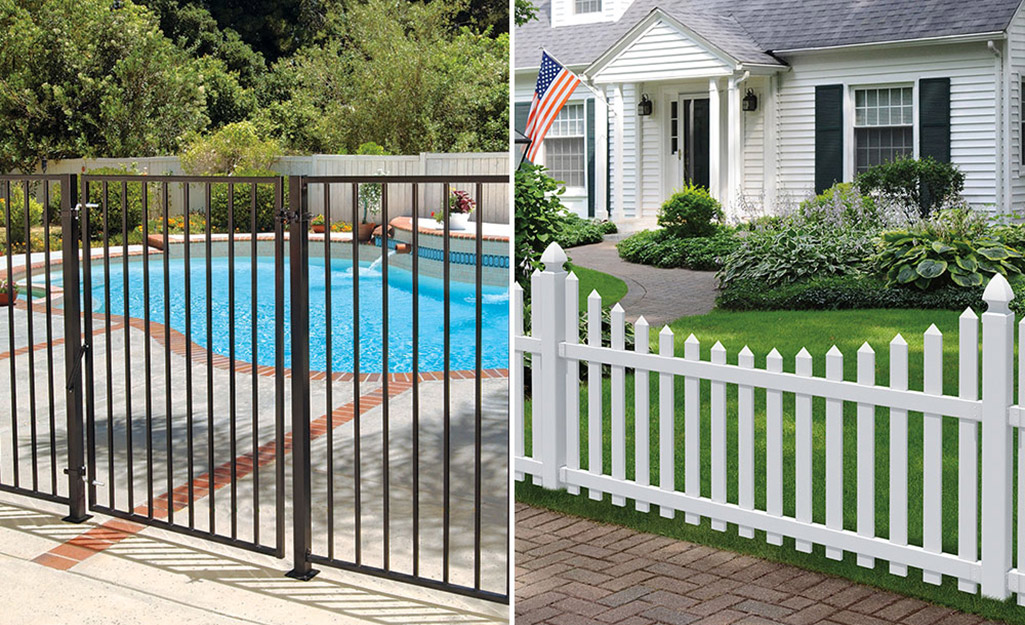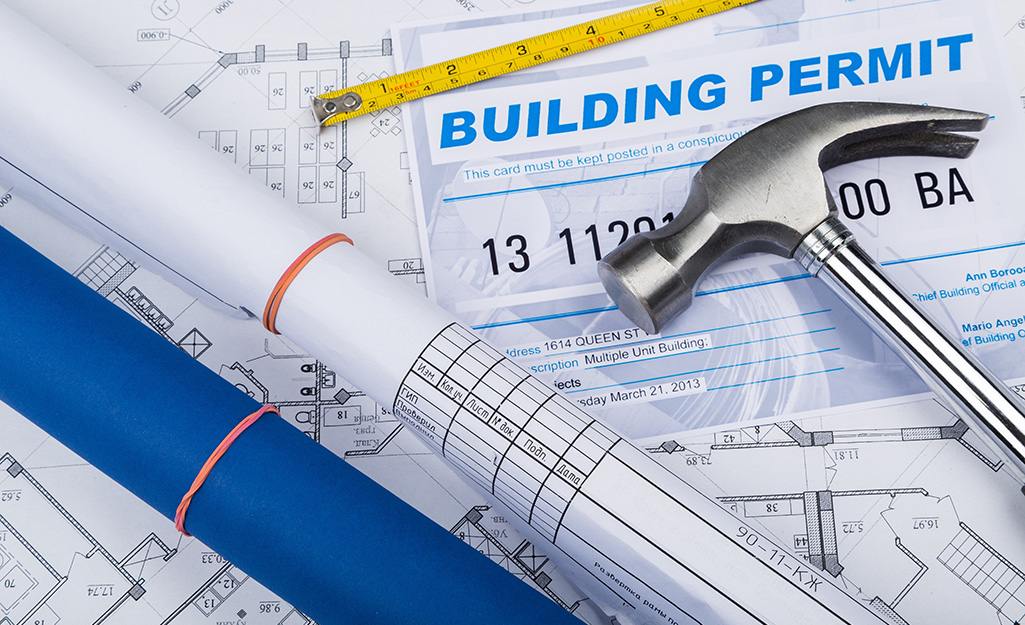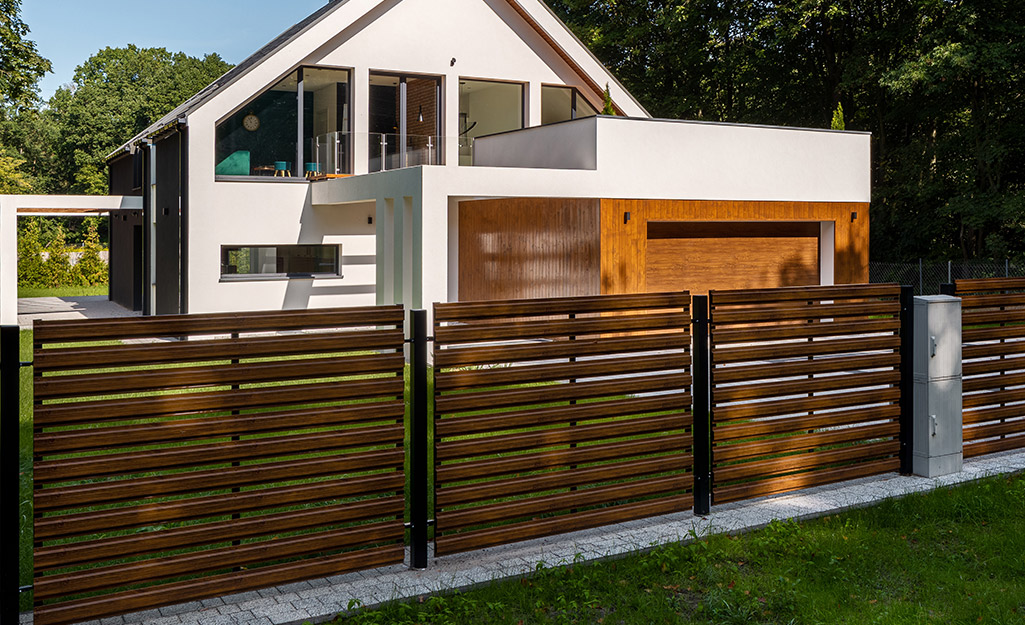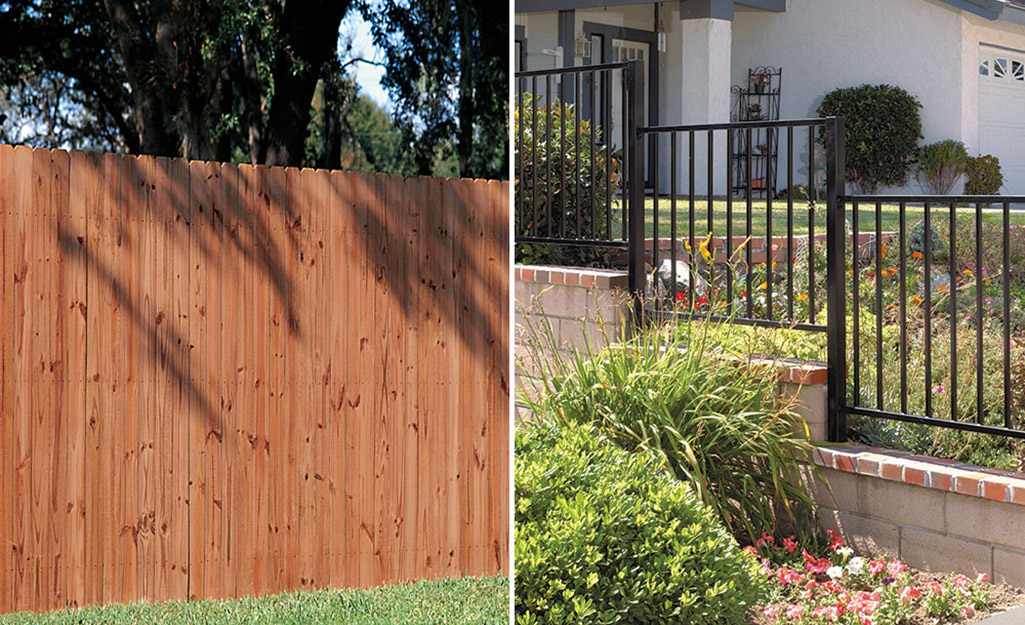How to Plan a Fence

Last updated September 7, 2023
A fence can add value to your property and increase your privacy. You might want a fence to complement your yard or to block it from view. If you have kids or pets, a fence can help keep them from leaving the yard. A fence can also help secure your property by making it more difficult to access.
This guide will help you plan a fence that meets your needs.
Table of Contents
Determine the Purpose of Your Fence
Check Local Laws and Building Codes
Decide Which Type of Fence Will Work Best
Figure Out Where to Install the Fence
Determine the Purpose of Your Fence

There are many types and styles of fences, so your first step is to determine what kind of fence you want. Will your fence serve a functional or decorative purpose?
Functional fences increase privacy and can make your home more secure. You might want a fence that can limit access to a pool or other area. Fences can also help keep pets or kids from leaving your yard.
A functional fence may reduce wind and noise on your property. Consider privacy or shadowbox styles in wood or vinyl. For more security, add heavy-duty locks and hinges.
Decorative fencing complements your home’s architecture. It may add an elegant accent to your property or draw attention to a landscape or garden. Popular styles include ornamental metal fences or picket fences in vinyl or wood. Post and rail fences are another choice.
Check Local Laws and Building Codes

A fence is usually considered a major structure. The way your fence can be built may be governed by county and city zoning laws. Homeowners’ associations and other neighborhood groups may also have fence-related regulations.
- Before finalizing the plans for your fence, check the laws and codes where you live. There may be restrictions on fence height, location and materials.
- If you live in a historic district or subdivision, check with your neighborhood association or homeowners’ association before installing a fence.
- Find out if approval from a zoning department or your homeowners’ association is required before building. You may need a permit or board approval before you begin work on your fence.
- Examine your deed for easements that may allow a utility company or neighboring property to have a right of way through your land. Easements may limit the design and location of your fence.
- Talk to the neighbors whose properties are adjacent to yours about your fence plans.
- Confirm your property lines to make sure your fence will be installed on your property. You can find information about your property lines at a local assessor’s office.
Decide Which Type of Fence Will Work Best

Though your selection may be limited by local laws and codes, fences are available in a wide variety of styles and materials. What a fence is made of will affect how long it will last and how it needs to be maintained. As you think about materials, consider your budget and how much you want to spend on your fence.
Here are a few of the most popular types of fences:
Wood: The types of wood fencing available depends on where you live, but may include cedar, redwood or Southern pine. Fences made of wood can be stained or sealed. Wood fences typically cost less upfront than wood alternatives, but need more maintenance.
Vinyl: Because vinyl fences don’t need to be painted or stained, they can look good for years. This low-maintenance fence type comes in kits or pre-made panels for easy installation.
Composite: This fence type offers the look of wood without the maintenance. Composite fences that look like stone are also available.
Metal: Because of the openings in a metal fence, it can add security and keep pets or kids contained in a yard without blocking the view. This fence type, which may be wrought iron or powder-coated aluminum, is low-maintenance.
Chain Link: This fence type has one of the lowest upfront costs and is great for security. Chain link is available is several colors. However, chain link fences lack the decorative appeal of other fencing materials.
Figure Out Where to Install the Fence

- Local guidelines may govern how far your fence must be from the property line or sidewalk. Measure carefully to be sure you comply with the rules.
- To see exactly where the property lines are, consider hiring a surveyor. A property survey can help you install your fence in your yard and not on your neighbors’ land.
- Plan where the gates should go. The gates should be big enough to leave room for anything that you need to take through them, like yard equipment or trash cans.
- Consider the terrain as you plan a fence. If your property lines are not level, your fence may need to be stepped or racked to follow sloping terrains.
- Stepping is commonly used in situations where the ground is aggressively sloped. Stepped fences are constructed using pre-assembled panels of pickets or boards. Each panel is placed parallel to the panel next to it, so that the fence gradually follows the slope like steps in a garden or deck.
- Stepping often results in an open space or gap between the bottom of the fence and the ground at one end of each panel. Because of this gap, stepped fences may not be the best choice for keeping pets in an enclosed area.
- Racked fences are constructed by placing each picket or board individually to conform closely to the slope of the ground.
As you plan your fence, you can decide if you want to do the job yourself or hire professionals. If your fence will be a DIY project, you can get everything you need delivered straight to your door. The Home Depot delivers online orders when and where you need them.
The Home Depot also offers fence installation. Before the build begins, a local fence installer can help you with all aspects of planning your fence, from measurements and design to obtaining permits.



































